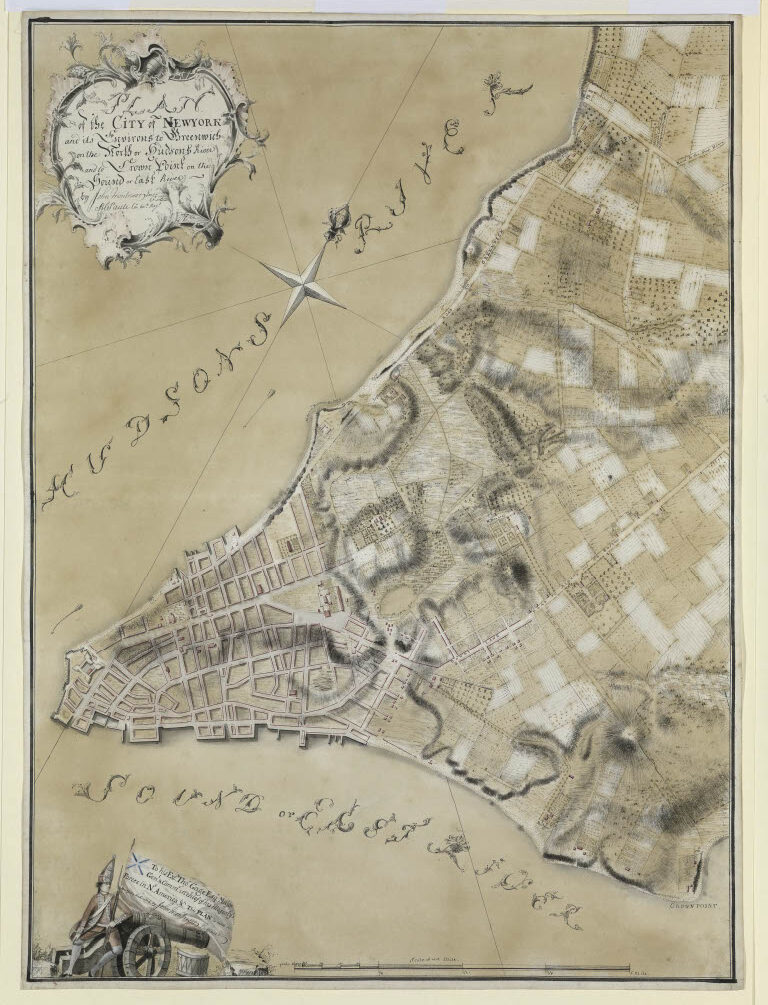The Thomas Gage papers, which have been housed at the Clements Library since William L. Clements himself purchased and donated them in 1937, give unique insight into the Revolutionary War from the British perspective. However, they also greatly inform the reader about everyday life in the colonies prior to the revolution. It is this aspect of the Gage story that Deborah Gage, a descendant of General Gage, focused on during her lecture A Conflict of Emotions: Thomas and Margaret Gage and the American Revolution on Wednesday, April 2, 2025.
Her talk focused on Gage’s marriage to wealthy American Margaret Kemble, which inspired much controversy at the time. She also shared the story of a John Montresor map of Manhattan that remained with her family, and why the family chose to keep that piece specifically. Randolph G. Adams Director Paul Erickson, Curator of Manuscripts Cheney Schopieray, and Assistant Curator of Maps Mary Pedley joined Deborah to discuss the map, as well as the importance of the Gage papers in research, and to answer audience questions.
If you missed the event, you can watch the presentations and Q&A here.
Read on to learn more about Gage’s marriage, the Map of Manhattan, and the importance of digitizing such a popularly-researched collection.
Thomas Gage’s Marriage to Margaret Kemble
Thomas Gage and Margaret Kemble married in December of 1758 and moved to Albany, New York shortly after. Born in New Jersey, Kemble was an American descended from the well-known and wealthy Cortlandt and Schuyler families. Kemble moved with Gage to Montreal in 1760, and then to Broad Street in New York City in 1764 after General Gage’s promotion to Commander-in-Chief of the North American military. Their home was the center of New York’s loyalists. Kemble was known to be an engaging and charming hostess. The family eventually bought land in Albany and a plantation in the West Indies. They moved back to England in 1776, and neither Gage nor Kemble would return to the States. However, unlike most Loyalists, the Gages were allowed to keep their land in West of Albany after the Revolutionary War.
John Monstresor, A Plan of the city of New York and its Environs…[1766], dedicated to General Thomas Gage. (Firle Place, Sussex)
The Map of Manhattan
When Mr. Clements purchased the Gage papers from the family, they chose to retain a draft of a map of Manhattan made by John Montresor, a close friend of the Gage family, in 1766. The map shows the topography in hachuring of land from Greenwich to the New York Sound, but also labels places of personal significance to the Gage family. Some notable locations include their Broad Street home, the estates of friends & Kemble’s family, and an obelisk dedicated to General James Wolfe and others who died in the Battle of Quebec.
Montresor and Gage had a close relationship. Both came to the colonies around the same time, served in the military together, and married wealthy American women. Montressor even named one of his sons Thomas Gage Montresor in honor of Gage. When the Gages left America, Montresor followed, and the two families lived close together in England.
Digitization of the Gage Papers
In 2021, the Clements Library received a $350,000 grant from the National Endowment for the Humanities to digitize and create metadata for the Thomas Gage papers. As of April 2025, the process is nearly complete. The English and Warren series of the papers were recently scanned, and are now available online. Digitizing these papers is so valuable because it expands access to the Gage papers significantly. Despite being one of the library’s most commonly requested collections, the physical copies of the papers can’t be easily accessed by many, especially British researchers. Digitizing these papers allows a wider variety of individuals to research the papers, and furthers the library’s mission of making primary sources more easily available for public viewing and access.

Clements curators unboxing the Gage papers upon their arrival to the Clements Library.


